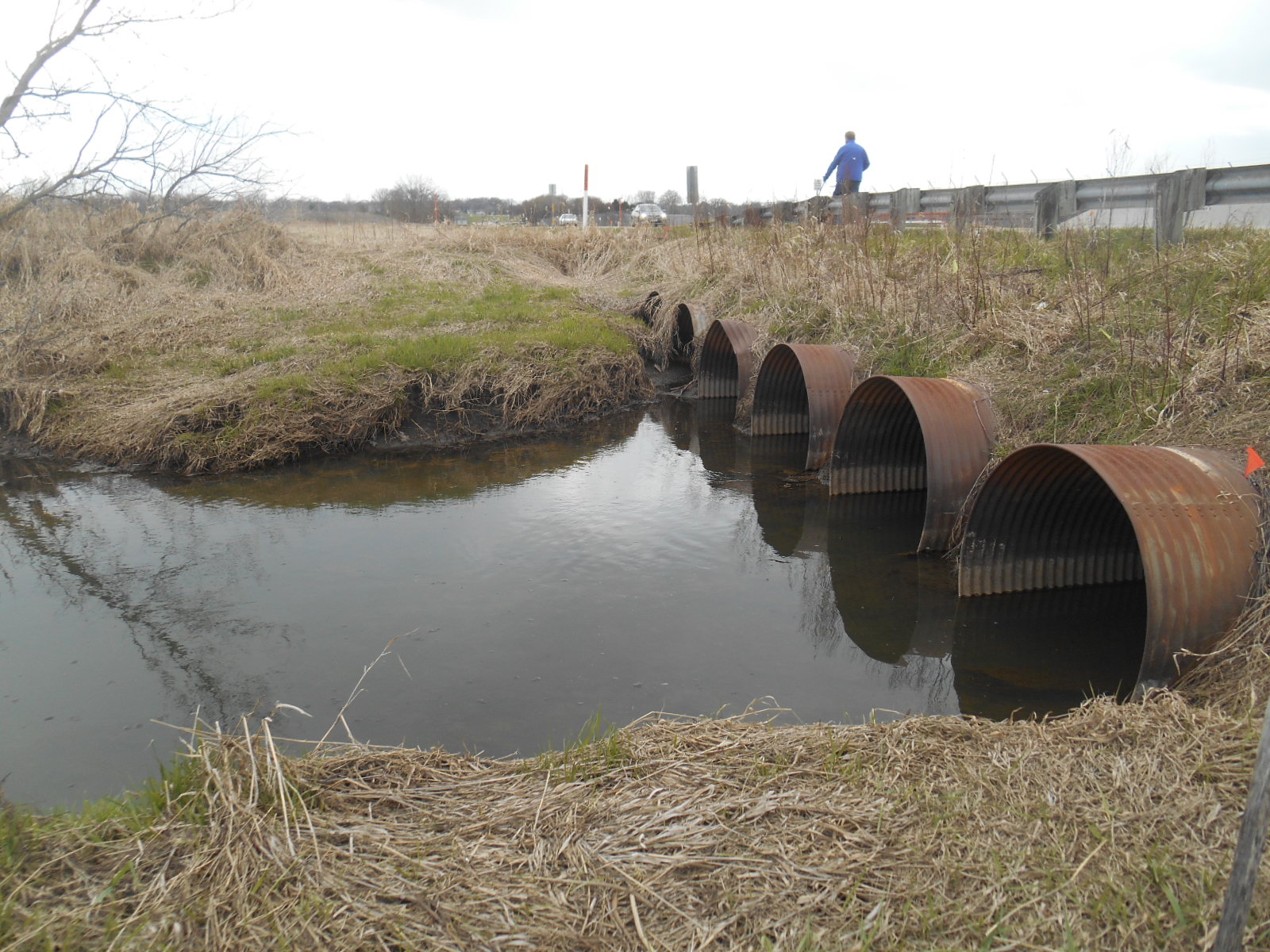[Above, Starkweather Creek draining from Dane County Regional Airport and Truax Air National Guard base. Photo-Maria Powell]
***
Last week a fellow Starkweather Creek activist discovered the “Dane County Regional Airport, December 2021 Progress Report” on the DNR BRRTS website, and shared it with a small group of activists who have been valiantly (perhaps insanely?) trying–but failing–to protect the creek from further toxic abuses.
“Read it and weep,” he advised.
The report includes the latest creek PFAS data. Total PFAS levels of up to over 40,000 parts-per-trillion (ppt) were found last summer in surface water in part of the west branch of the creek (dubbed the “east ditch” in the report) that flows through the Truax Air National Guard base. (Also, in testing done just north of this in 2020, in preparation for a facility being constructed for the F-35 fighter jets, consultants contracted by the military found 96,505 ppt total PFAS in very shallow groundwater).
This PFAS has been oozing down the creek for decades. To visualize the damage, see the Starkweather PFAS Morass Map.
In dye tests done by DCRA last June, creek water flowed into this so-called “east ditch,” which suggests that the creek was so stagnant that it was flowing backwards. [1]
But not to worry! With public dollars, DCRA is trying sham experimental “pilot” PFAS treatments, which are highly unlikely to do anything.
Weep, indeed.
This is nothing new. Starkweather Creek has been abused in countless ways by the highly privileged, educated people of Madison since they settled what was a Ho-Chunk paradise in the mid-1800s (after forcibly removing most of the Ho-Chunk). In the 1900s, progressive Madisonian leaders welcomed huge corporations and the U.S. military here to help them further pollute paradise--and together they poison Starkweather Creek profusely (and with impunity) to this day. [2]
After decades of severe, serial abuses, is there any hope for Starkweather Creek?
Perhaps I’ll ponder that question another day, when I feel more hopeful than I do today…
****
[1] Formerly spring-fed Starkweather Creek has been mostly stagnant for decades, in part, because many high-capacity municipal wells (and formerly the Oscar Mayer wells) in the area are sucking huge volumes of water downward. How far down has PFAS-contaminated creek water been pulled? Nobody knows. Nobody has measured.
[2] “Starkweather Creek was once a small, meandering wetland drainage stream. The wetland drained by the West Branch was part of a large wetland area which included the Cherokee Marsh area drained by Token Creek. Groundwater flowing from a few springs and from wetland seeps provided a moderate amount of cool, steady baseflow in Starkweather Creek. Wetlands provided spawning areas for lake fish such as northern pike, walleye and bluegills. Now the creek is essentially an open storm sewer with little fish or other aquatic life. What happened?” –1983 Dane County Regional Planning Commission report
****


